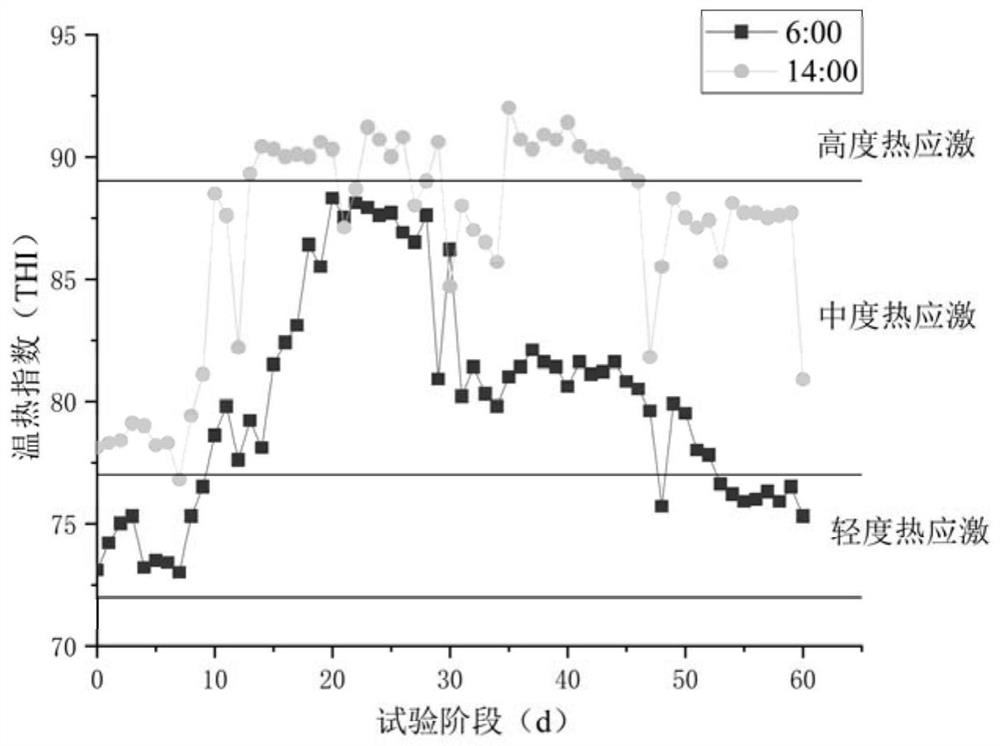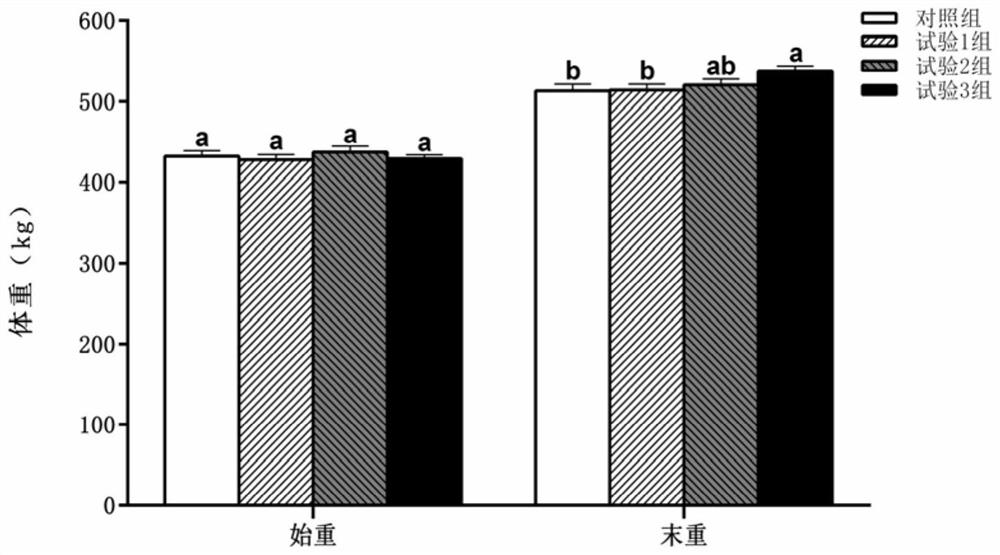Anti-heat stress feed additive for beef cattle in fattening period under southern damp and hot environment and application of anti-heat stress feed additive
A feed additive, moist-heat environment technology, applied in application, animal feed, animal feed, etc., can solve problems such as low reproductive efficiency, environmental pollution, and reduced feed intake
- Summary
- Abstract
- Description
- Claims
- Application Information
AI Technical Summary
Problems solved by technology
Method used
Image
Examples
Embodiment 1
[0038] This example prepares beef cattle anti-heat stress feed additive 1 for comparison, which is prepared from the following raw materials in weight percentage: ruminant special yeast 17-19%; rumen-passed fat powder 81-83%.
[0039] The specific preparation and usage methods of this feed additive are as follows:
[0040] During preparation, the raw materials of additives are taken in proportion and mixed evenly.
[0041] On the premise that each raw material of the additive is uniformly mixed, the mixed additive raw material is mixed with Niuchangyuan TMR feed and stirred evenly. The specific additive dosage of the feed additive is added according to 1.5% of the total daily intake of TMR feed by cattle. The raw materials of the additives can be directly used in the original diet of the farm without changing the original feed raw materials.
Embodiment 2
[0043] This embodiment prepares beef cattle anti-heat stress feed additive 2 for comparison, which is formulated from the following raw materials in weight percentage:
[0044] Ruminant special yeast 25%, rumen-passed fat powder 10%, rumen-passed γ-aminobutyric acid 15%, coated V C 10%, magnesium oxide 30%, potassium chloride 8%, sodium saccharin 2%.
[0045] The specific preparation and usage methods of this feed additive are as follows:
[0046] During preparation, the raw materials of additives are taken in proportion and mixed evenly.
[0047] On the premise that each raw material of the additive is uniformly mixed, the mixed additive raw material is mixed with Niuchangyuan TMR feed and stirred evenly. The specific additive dosage of the feed additive is added according to 1.5% of the total daily intake of TMR feed by cattle. The raw materials of the additives can be directly used in the original diet of the farm without changing the original feed raw materials.
Embodiment 3
[0049] This embodiment prepares the anti-heat stress feed additive for beef cattle of the present invention, which is prepared from the following raw materials in weight percentage: 8% special ruminant yeast, 40% rumen-passed fat powder, 4% rumen-passed γ-aminobutyric acid, coated V C 5%, magnesium oxide 24%, potassium chloride 16%, sodium saccharin 3%.
[0050] The specific preparation and usage methods of this feed additive are as follows:
[0051] During preparation, the raw materials of additives are taken in proportion and mixed evenly.
[0052]On the premise that each raw material of the additive is uniformly mixed, the mixed additive raw material is mixed with Niuchangyuan TMR feed and stirred evenly. The specific additive dosage of the feed additive is added according to 1.5% of the total daily intake of TMR feed by cattle. The raw materials of the additives can be directly used in the original diet of the farm without changing the original feed raw materials.
PUM
 Login to View More
Login to View More Abstract
Description
Claims
Application Information
 Login to View More
Login to View More - R&D
- Intellectual Property
- Life Sciences
- Materials
- Tech Scout
- Unparalleled Data Quality
- Higher Quality Content
- 60% Fewer Hallucinations
Browse by: Latest US Patents, China's latest patents, Technical Efficacy Thesaurus, Application Domain, Technology Topic, Popular Technical Reports.
© 2025 PatSnap. All rights reserved.Legal|Privacy policy|Modern Slavery Act Transparency Statement|Sitemap|About US| Contact US: help@patsnap.com



